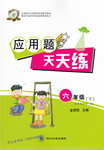阅读理解。
Fat and shy, Ben Saunders was the last kid in hid class picked for any sports team. "Football, tennis,
cricket- anything with a round ball, I was useless," he says now with a laugh. But back then he was the
one always made fun of in school gym chasses in Devonshire, England.
It was a mountain bike he received for his 15th birthday that changed him. At first he went biking
alone in a nearby forest. Then he began to ride the bike along with a runner friend. Gradually, Saunders
set his mind on building up his body, increasing his speed and strength. At the age of 18, he ran his first
marathon.
The following year, he met John Ridgway and was hired as an instructor at Ridgway' s School of
Adventure in Scotland, where he learned about Ridgway' s cold-water exploits, Greatly interested, Saunders
read all he could about North Pole explorers and adventures, then decided that this would be his future.
In 2001, after becoming a skillful skier, Saunders started his first long-distance expedition (探险)
towards the North Pole. It took unbelievable energy. He suffered frostbite (冻疮), ran into a polar bear
and pushed his body to the limit, pulling his supply-loaded sled (雪橇) up and over rocky ice.
Saunders has since become the youngest person to ski alone to the North pole, and he's skied more
of the North Pole by himself than any other British man. His old playmates would not believe the change.
Next October, Saunders, 27, heads south from the coast of Antarctica to the South Pole and back,
a 2900-kilometre journey that has never been completed on skis.
1. What change happened to Saunders after he was 15 years old?
A. He became good at most sports.
B. He began to build up his body.
C. He joined a sports team.
D. He made friends with a runner.
2. The underlined word "exploits" (paragraph 3) is closest in meaning to ______.
A. journeys
B. researches
C. adventures
D. operations
3. Which of the following is the correct order of the events that happened to Saunders?
a. He ran his first marathon.
b. He skied alone in the North Pole.
c. he rode his bike in a forest.
d. He planned an adventure to the South Pole.
A. acdb
B. cdab
C. acbd
D. cabd
4. What does the story mainly tell us about Saunders?
A. He is a success in sports.
B. He is the best British skier.
C. He is Ridgway's favorite student.
D. He is a good instructor at school.

 应用题天天练四川大学出版社系列答案
应用题天天练四川大学出版社系列答案